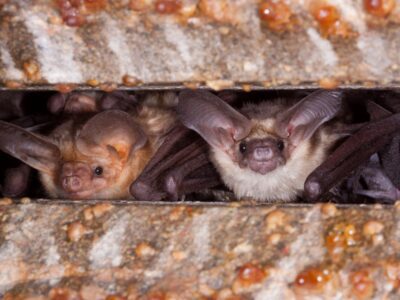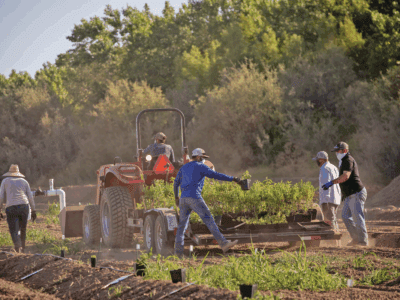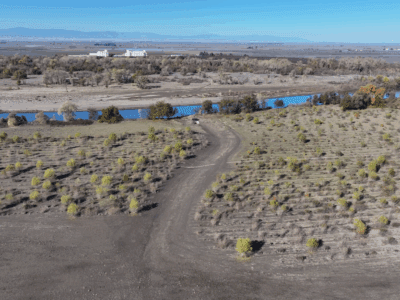In November last year, River Partners completed one of our most challenging projects to date: removing nearly one mile of illegally dumped concrete from the San Joaquin River at Dos Rios State Park near Modesto.
This isn’t the photogenic, tree-planting side of river restoration. This is the hard-to-fund, harder-to-permit work of clearing garbage from riverbanks.
“It felt like peeling off a band-aid,” said Senior Restoration Ecologist Neil Wilson, who successfully guided the project through three years of a permitting gauntlet.
This effort was about far more than hauling away concrete rubble. It was about restoring a river’s ability to meander and, ultimately, its health. When rivers meander, they can recharge aquifers, reconnect historic floodplains, improve water quality, reduce flood risk, and create desperately needed habitat for struggling wildlife.
There’s one species in particular that stands to benefit immensely: the bank swallow.
A Bank Swallow with No Banks
Bank swallows are small, darting birds that nest exclusively in colonies carved into vertical cliffs of eroding riverbanks. Their scientific name, Riparia riparia, literally means “riverbank, riverbank.” They are an icon of the river, and the bird represented in River Partners’ logo.
“They are the canary in the coal mine for river health,” says River Partners Associate Science Director Michael Rogner. “If rivers which historically supported bank swallows no longer do that, something is wrong.”
Since the 1970s, bank swallow populations in North America have dropped nearly 90% making them one of the continent’s most rapidly declining birds according to the American Bird Conservancy. In California, their populations have declined an estimated 50% since the 1980s and they are listed as threatened under the California Endangered Species Act. The Sacramento and Feather rivers are the most important breeding habitat for the bank swallows outside of the Great Lakes region in North America.

Bank swallows need bare, eroding banks to nest. Along many rivers in California, rock and rubble, sometimes called “riprap,” is stacked against the banks to prevent erosion and protect levees, roads, and farmland.
While much bank armoring necessary to safeguard infrastructure and prevent cities and towns from flooding, not all is legally authorized. Private landowners sometimes illegally dump broken concrete or asphalt along the river’s edge without permits.
Legal or illegal, bank armoring can have devastating consequences for ecological health and wildlife.
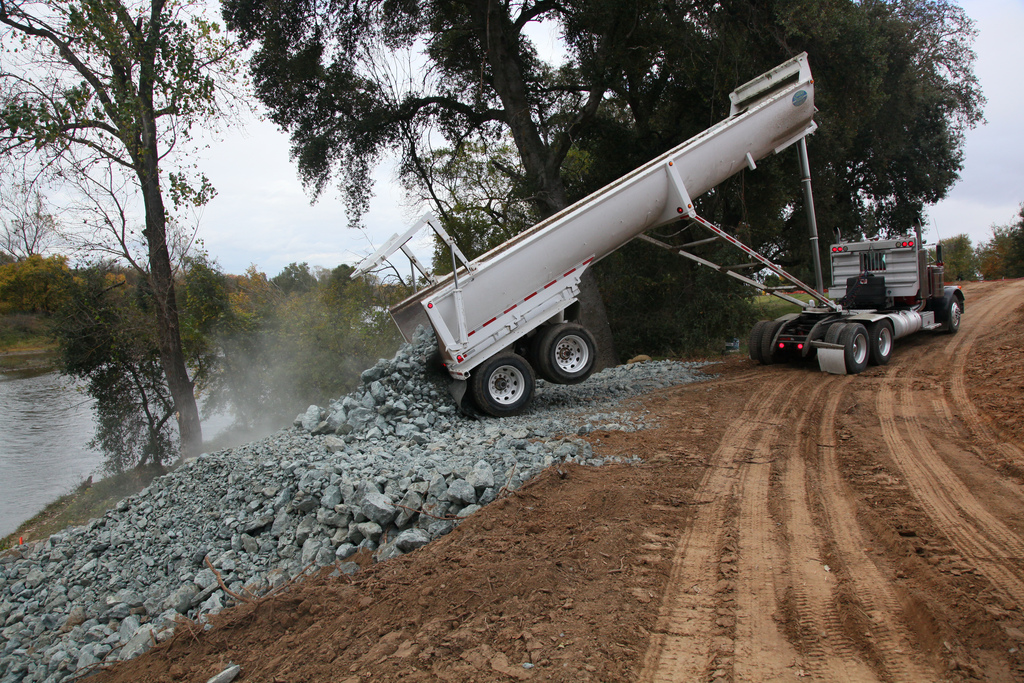
Today, roughly 70% of California’s remaining bank swallow population clings to a 100-mile stretch of the Sacramento River between Red Bluff and Colusa. That stretch includes 56 miles of bank revetment—leaving only a few sections of suitable habitat for nesting. In 2020, just 41 active colonies were documented along that corridor. Colony size has been shrinking as well—only six colonies surveyed in 2020 had more than 1,000 burrows. Typical colony size ranges from a few birds to several thousand.
In the San Joaquin Valley, bank swallows have been completely absent since the 1980s, when one documented colony near Modesto vanished.
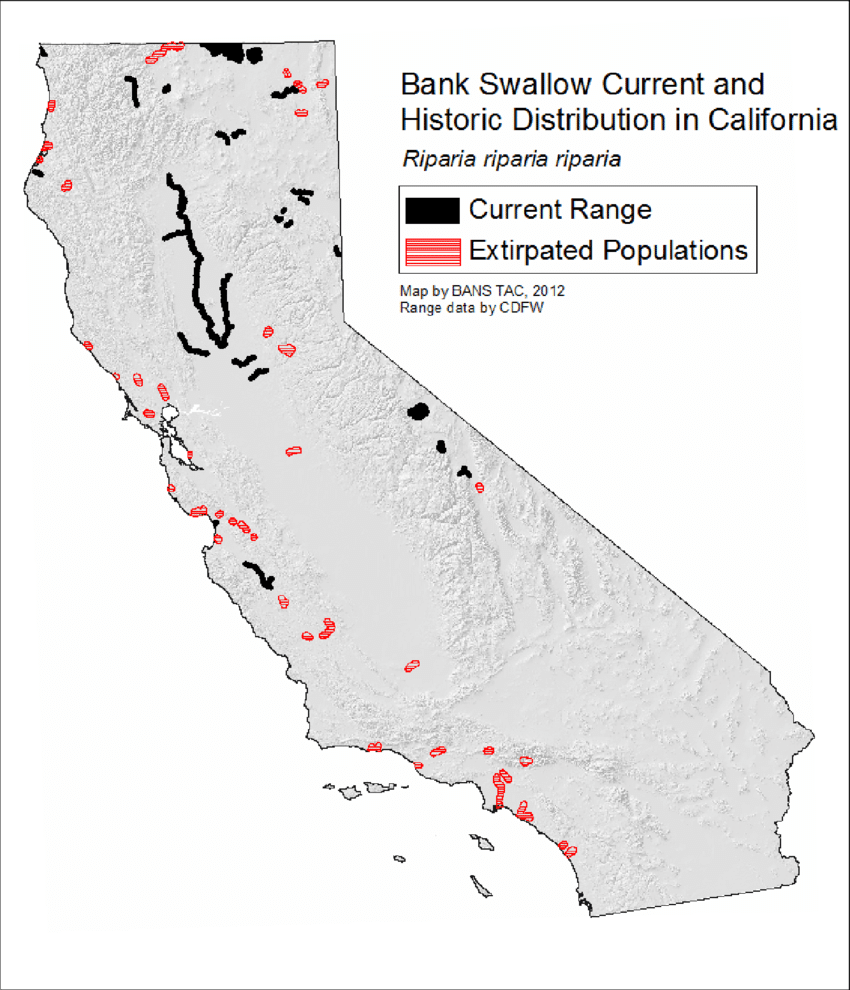
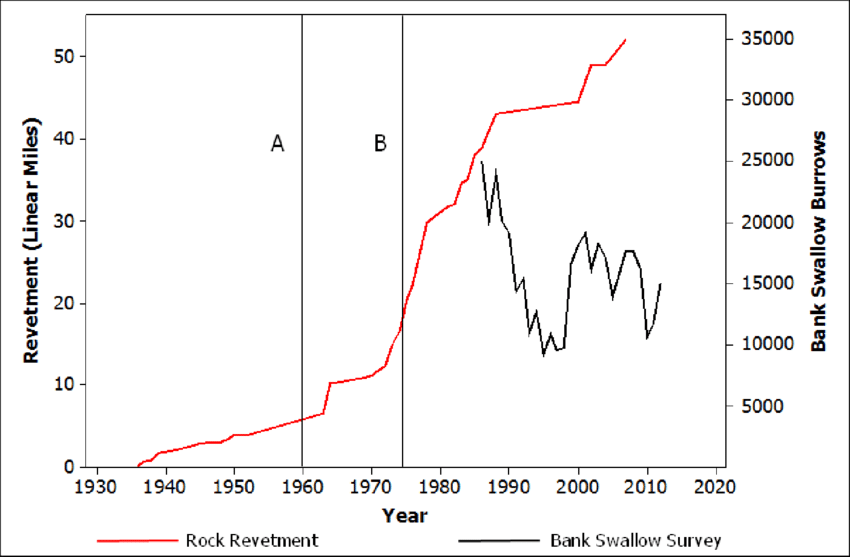
Their story is a stark illustration of how efforts to control natural river processes have unintended consequences for wildlife and ecosystems.
But there’s hope. We know that when rubble is removed from riverbanks, the swallows return. In fact, one study looked at revetment failure on the Sacramento River where the river naturally eroded behind bank revetment and caused it to fail, creating a newly eroding bank. Out of the 18 failure sites, 16 had been colonized by swallows. In the two cases where swallows didn’t return, the soils were unsuitable to support a colony.
“Bank swallows do in fact respond to rock removal,” says California State Parks Environmental Program Manager Dr. Ron Melcer, who authored the study. “They are able to re-colonize the cut banks that form.”
“Most of the other species we’re trying to recover, we’re still trying to figure out exactly what needs to be done,” says Rogner. “But with bank swallows, we know exactly what needs to be done. You just have to remove the rock.”
The Colony at River Mile 182
In the early 2000s, Rogner was part of a team conducting the annual bank swallow census on the Sacramento River. The census was initiated in the 1980s by California Department of Fish and Wildlife (CDFW) biologist Barry Garrison (at the time, the agency was called the California Department of Fish and Game). Data from the first census helped get the bank swallow listed as a threatened species under the California Endangered Species Act.
For 20 years, one of the last remaining mega colonies on the Sacramento River was located just south of Ord Ferry Bend near Chico, at river mile 182. One evening, Rogner camped on the island across from the colony with another birder. They estimated 7,000-8,000 swallows, many of them juvenile birds just fledging from nest burrows.
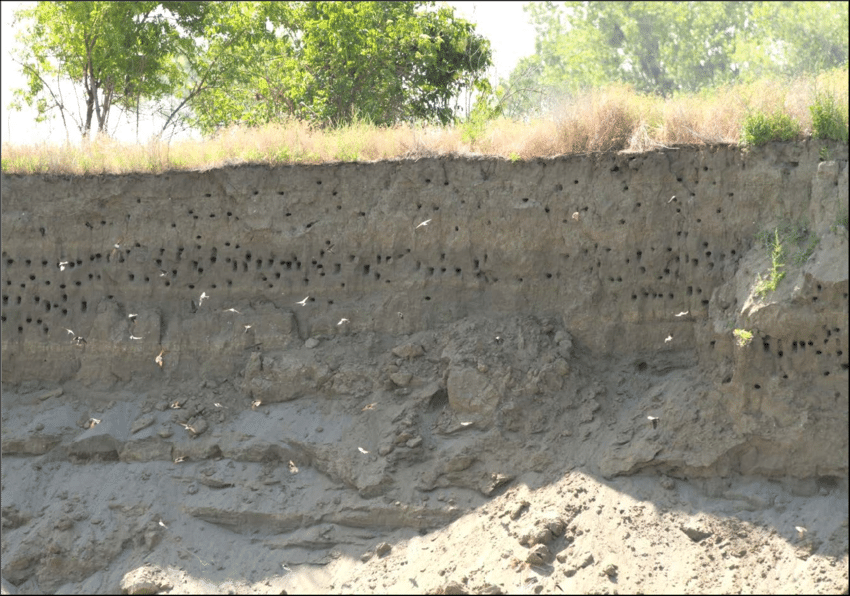
“It was just this amazing experience, all seven or eight thousand birds flying around, eating mosquitos and aerial insects,” says Rogner. “I’ve had the opportunity to experience some pretty cool wildlife encounters in my career: great white attacks on elephant seals and packs of wolves coming 50 yards from me. But that evening, sitting there watching the bank swallows, is something that I will never forget.”
Fast forward to the annual bank swallow survey of 2007. On that early morning in June, the team approached river mile 182.
“Everybody was super hyped to go visit this colony,” says Rogner. “Then we turn the corner, and it’s total, utter silence. There wasn’t a single bird.”
What they saw instead? A pile of rock—nearly a mile long. And so fresh they could smell the diesel from the trucks that had dumped it.
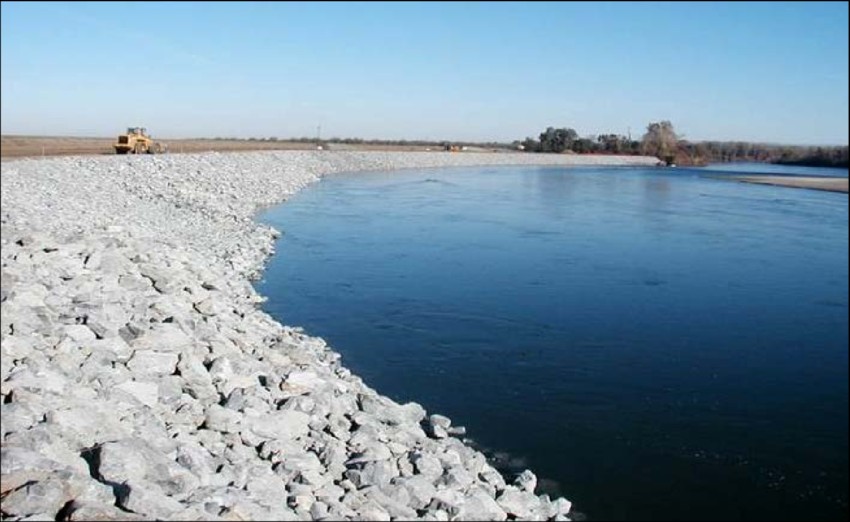
After investigating, it turned out to be unauthorized work tacked on to an adjacent project. An error wiped out the last, largest mega colony of bank swallows.
Turning the Tide
The devastation lit a fire.
As part of the mitigation effort for the error, the state created and funded the Bank Swallow Technical Advisory Committee, of which River Partners has been a member of since day one. The purpose of the group was to ensure similar errors would never happen again, and also to write a conservation strategy detailing actions needed to recover the species.
“We spent a few years writing the strategy, doing the analysis that we needed to do,” says Rogner. “What we recommended was 56 miles of bank revetment needed to be taken off the Sacramento and Feather rivers if you want to have a healthy bank swallow population.”
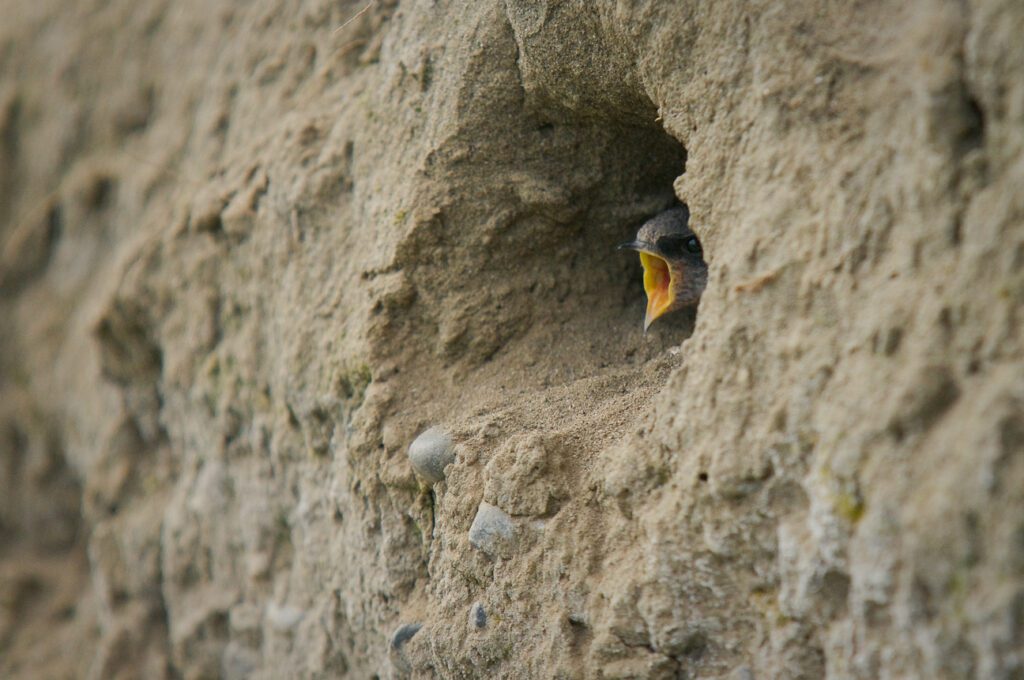
In 2017, the Central Valley Flood Protection Board adopted the Central Valley Flood Protection Plan, developed by the California Department of Water Resources to guide improvements to the Central Valley’s flood management system. The plan formally acknowledged the committee’s recommendations and established targets to restore 48 miles of natural bank along the Sacramento, Feather, and San Joaquin rivers.
“It felt like, now we’re cooking with gas,” says Rogner. “Now we’ve got everything lined up to make the recovery actions happen.”
But progress has been stagnant—even regressive. Despite the adoption of science-backed targets to reduce bank revetment and promote natural river processes, new rock continued to be added to the river. By 2022, less the 5% of the Conservation Strategy’s measurable goals had been met. And, although state policy recognizes the importance of removing revetment, no successful permitted projects had removed rock from the system.
Rubble Removal at Dos Rios
For over 20 years, River Partners has tried to advance multiple projects to remove illegal rubble from riverbanks throughout the Central Valley. Permitting, funding, and enforcement remain massive hurdles.
“It’s very easy to put rock on the river,” says Rogner. “It’s almost impossible to take off. It basically takes an act of Congress.”
But in 2024, we did it. The Dos Rios Rubble Removal Project along the San Joaquin River near Modesto removed nearly one mile—almost 5,000 linear feet—of unpermitted concrete and asphalt debris that had been illegally dumped along the riverbank over previous decades. For the first time, we showed that there is a pathway for legally removing illegal debris from rivers—a process that had previously seemed unachievable.
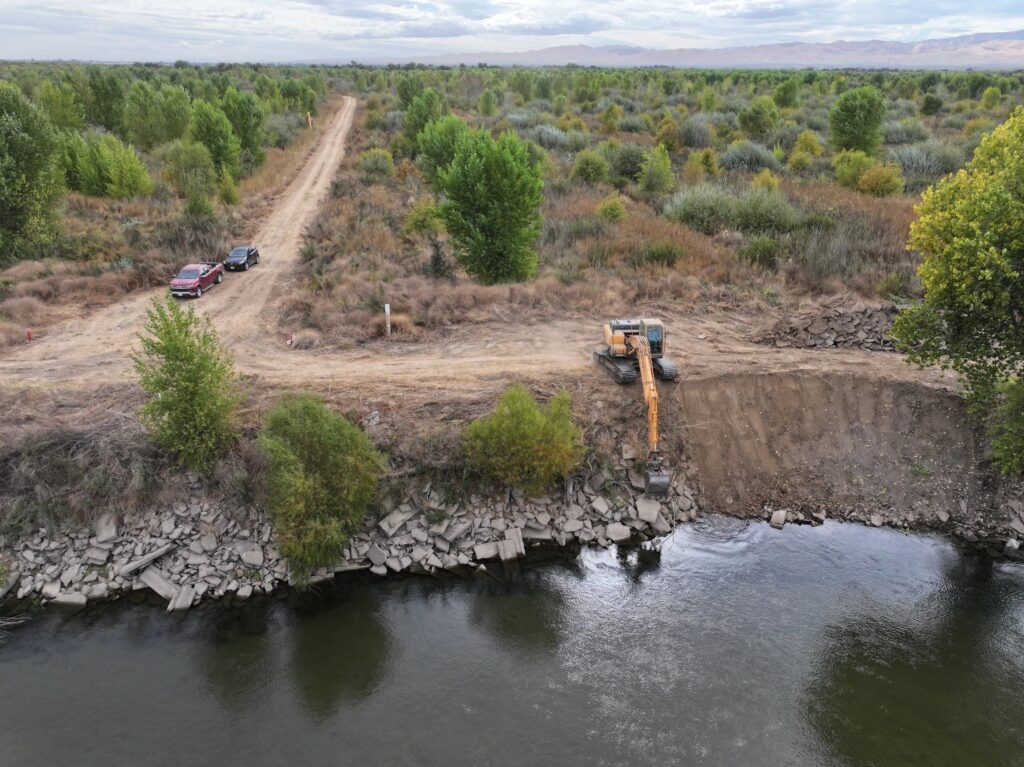
The rubble removal at Dos Rios is a major win—not because we expect swallows to immediately colonize the newly exposed river banks (only one colony was ever documented in the San Joaquin Valley before the 1980s)—but because we’ve created a replicate, legal pathway for rubble removal. This breakthrough opens the door to remove many miles of unpermitted debris along Central Valley rivers, especially in critical bank swallow habitat along the Sacramento and Feather rivers.
“Kudos to the team at Dos Rios,” says Melcer. “This is the only location where rock removal has been meaningfully implemented.”
There was another lesson, too: words matter. “I wanted to quit on the rubble removal project,” admits River Partners Senior Director of Conservation John Cain. “There were a lot of weird turns we took before we realized that we needed to call it ‘garbage’ instead of ‘rubble’ in order to get the permits.”
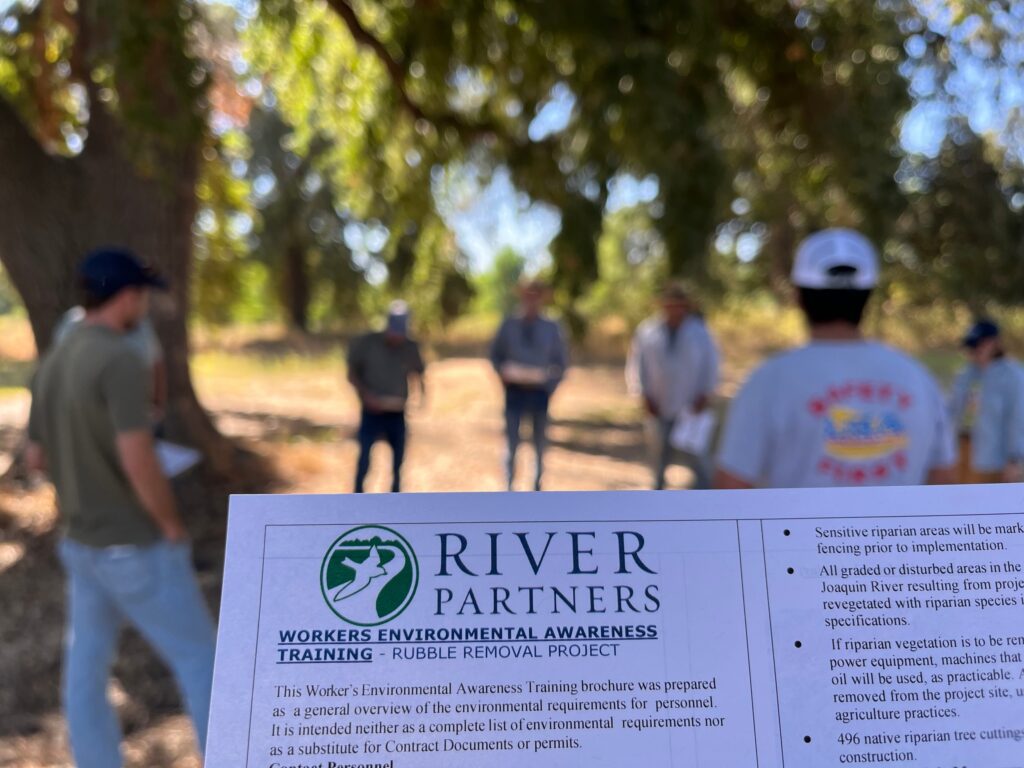
A Bird’s Future Depends on Us
The newly exposed banks at Dos Rios are already changing. The river has started to meander again. Native willows and cottonwoods planted along the water’s edge are taking root and providing shade to fish and other aquatic wildlife along the river. Every time our scientists go to monitor the site, they check the bank, hopeful that one day, bank swallows might return.
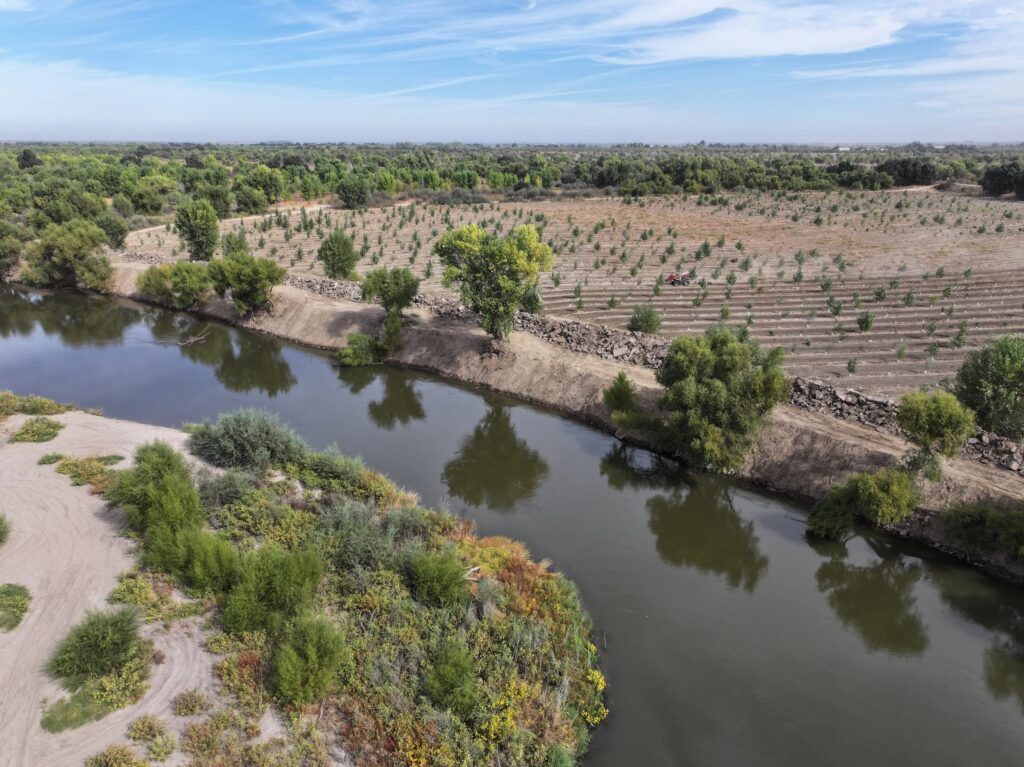
“There’s this cultural assumption that holding the river is a good idea,” says River Partners President Julie Rentner. “But that mindset is changing. The reality is, letting rivers move—in the right places—can reduce flood risk, improve water supplies, and give wildlife like salmon and bank swallows a fighting chance.”
We’ve already seen excitement in the river restoration community for our win at Dos Rios. “I’ve been at a number of meetings out in the field recently, and people have talked to me about Dos Rios rubble removal as if it’s the most important thing we’ve ever done,” says Rogner. “I tend to agree with them.”
This project was funded by the California Department of Water Resources’ Riverine Stewardship Program through the Costa-Machado Water Act of 2000, via grant funding awarded to Reclamation District 2092.


